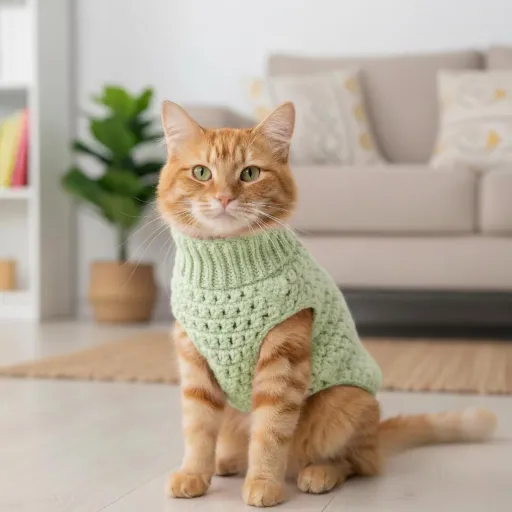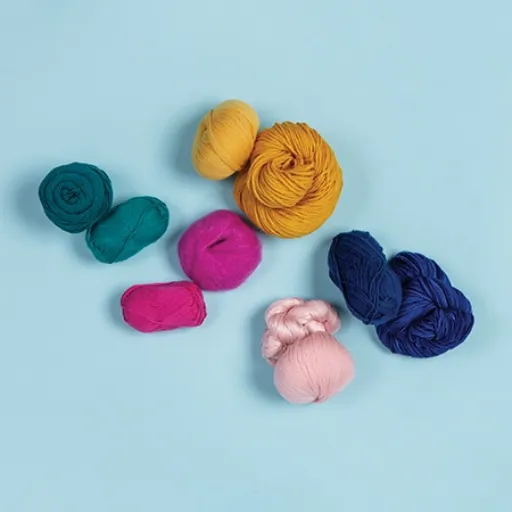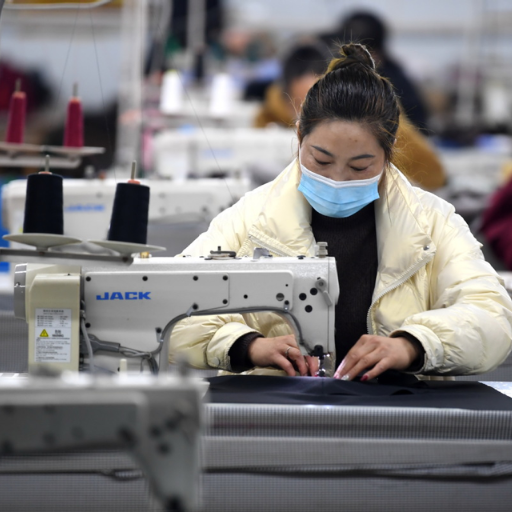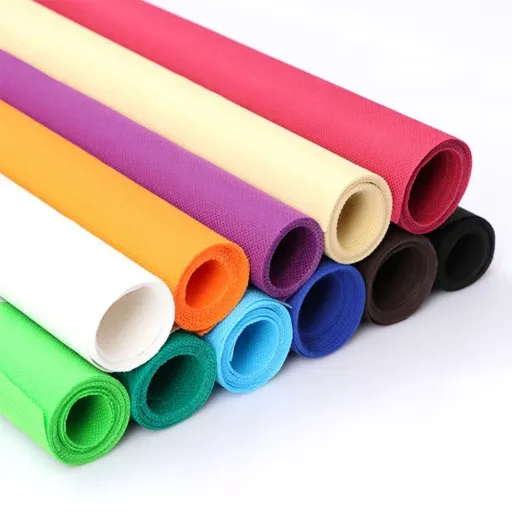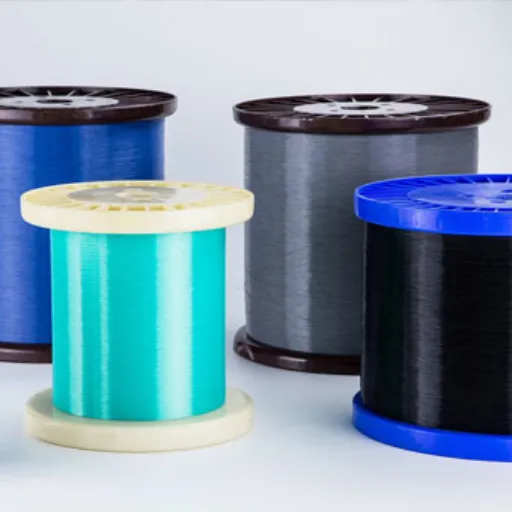It is an extravagantly soft fabric that finds a myriad of uses, and there is perhaps no other major textile, due to which ‘viscose’ is a considered a synonym for artificial silk. Viscose is the middle link between nature and synthetic, giving the advantages of both. This blog takes the reader through the viscose journey-the intriguing origin, the interesting properties, and the numerous applications it is put to in fashion, homes, and beyond. For designers, shoppers, and anyone seeking sustainable fabrics, this complete guide is the need of the hour; it is going to lead you to everything about viscose and why it continues to stand the test of time in the textile industry. So roll up your sleeves and get ready for some unmissable information and surprising facts about this highly sought-after textile!
Introduction to Viscose Fiber
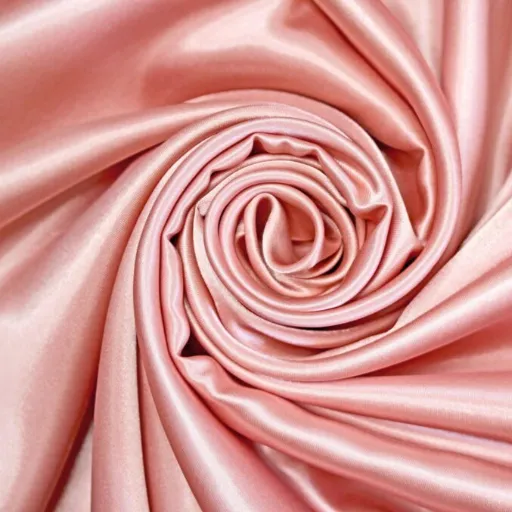
What is Viscose?
Viscose is a semi-synthetic fiber composed of the chemical cellulose, mostly derived from wood pulp. It is a type of rayon and is considered versatile and soft-textured. During manufacturing, chemically treated cellulose fibers are made that can resemble the appearance or feel of natural fibers like silk, cotton, or wool. Hence, in the textile industry, it is favored for creating fabrics that feel luxurious yet are not very expensive.
Key Benefits of Viscose:
- Allows for air circulation, making it ideal for summer clothing
- Highly absorbent for comfort during wear
- Fashions well, giving an elegant appearance to garments
- Cost-effective alternative to natural silk
⚠️ Care Considerations:
Viscose tends to wrinkle and shrink while washing, requiring careful handling. Even though it is naturally sourced from wood, its production is chemical in nature, leading to environmental concerns. Sustainability efforts are directed toward producing viscose using less harmful chemicals and processes.
History of Viscose Production
Viscose production goes back to the 19th century when it was entirely developed as the industry said-for silk cannot find aforetime. The process was first patented by three British scientists Charles Frederick Cross, Edward John Bevan, and Clayton Beadle, in 1892. They found a method of breaking down the cellulose of wood pulp by treatment with chemicals to spin fibers out, creating what was at first dubbed artificial silk or, somewhat later, rayon or viscose.
Historical Timeline:
- 1892: First patented by Cross, Bevan, and Beadle
- Early 1900s: Production technique industrialized
- 1920s-1930s: Widespread use in apparel and upholstery
- Modern Era: Focus on sustainable production methods
Shortly after its discovery, the production technique of viscose was industrialized and became quite popular during the early part of the 20th century. Factories liked the viscose because of its low cost and flexibility compared with natural silk and hence was able to reach a lower-tier market. By the 1920s and 1930s, viscose was used widely in apparel, upholstery, and other textiles. It became highly popular because it could be used with other fibers, giving it more durability and flexibility for different uses.
Industrial use of the viscose became environmentally questionable over the decades. Normally it uses highly toxic chemicals such as carbon disulfide in production, posing plenty of health hazards to factory workers and ecological damage to surrounding areas. This very fact galvanized efforts from the textile industry towards sustainability to reform the methods of production. Then, several environmentally conscious innovations have sprung up that will guarantee to keep viscose at the forefront of fibers without compromising the environment or ethics.
Raw Materials Used in Viscose Fiber
Viscose fiber is derived from cellulose, a natural polymer from plant sources. Cellulose is extracted from wood pulp, generally taken from fast-growing trees like eucalyptus, beech, and spruce. These trees are grown for industrial purposes and thus provide a constant and renewable supply of raw materials. Bamboo has become an alternative source for cellulose in recent days because it grows very fast and requires very little input of resources.
| Raw Material Source | Growth Characteristics | Sustainability Factors |
|---|---|---|
| Eucalyptus | Fast-growing, industrial cultivation | Renewable, requires responsible forestry |
| Beech | Moderate growth, hardwood | Sustainable when properly managed |
| Spruce | Coniferous, industrial forestry | Renewable resource with proper management |
| Bamboo | Extremely fast-growing | Low resource input, highly sustainable |
The wood or bamboo material is converted into pulp in the initial production steps. The pulp, after conversion, undergoes chemical treatment to separate the cellulose, which is then purified to get rid of impurities that may affect fiber quality. Considering the raw materials are naturally occurring and renewable, one cannot ignore whether their sourcing has been sustainable or not. On the face of it, increasing numbers of manufacturers support the use of wood pulp from responsibly managed forests so as to protect the environment.
Eventually, the raw materials selected have a high bearing upon the viscose fiber quality. Usually, high-grade cellulose will produce fibers which are strong, soft, and very versatile. The other issue is promoting a sustainable way of sourcing those raw materials, as this is one realm in which the environmental cost of viscose production can be reduced in line with modern-day ethical and environmental standards.
Properties of Viscose Fiber
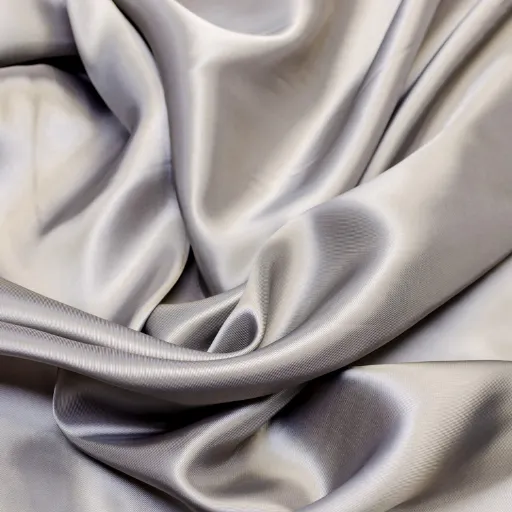
Characteristics of Viscose
Viscose fiber is famous for offering a silk-like hand and feel-so much so that the fiber is highly coveted in apparel and textiles. It is very light and breathable and is thus suited for warm-weather garments or activewear. The fiber also absorbs moisture very well which makes garments comfortable to wear and timely in wicking away sweat.
🌟 Texture & Feel
Silk-like hand and luxurious feel
🌬️ Breathability
Excellent air circulation and lightweight
💧 Moisture Absorption
Superior moisture-wicking properties
Another important property of viscose is its versatility when blended. It could be blended with fibers such as cotton, wool, or polyester to improve the durability, strength, or aesthetic properties. In this way, the fiber finds applicative use in almost all of the fields, from fashion to upholstery. From the standpoint of design, viscose is also said to drape well, offering a great deal of style potential for use in beautiful dresses and linings.
There are thus some disadvantages with viscose. It loses strength upon exposing to water and thus has to be handled gently during washing in order to retain quality. It also wrinkles quite easily and may shrink with improper care. Nevertheless, it is more or less universally favored because of thin viscose could be classified as soft, breathable, and adaptable.
Advantages of Viscose Fabric
✅ Key Advantages
- Exceptional Softness: Comfort and luxurious feel against the skin
- Cost-Effective: Silk-like qualities at a fraction of the price
- Breathability: Excellent temperature regulation in hot conditions
- Lightweight: Enhanced cooling ability and easy movement
- Versatility: Suitable for various fashion and home applications
- Excellent Drape: Perfect for flowing, elegant designs
- Color Retention: Accepts dyes beautifully with vibrant results
Viscose fabric has a number of advantages and is, therefore, highly regarded among textile manufacturers. Its predominant feature is softness, with a touch that comforts the wearer and caresses the skin, earning its reputation as an all-time wear or even luxury garment. The surface feels smooth like natural fibers, such as cotton and silk but is way cheaper.
Another advantage granted to this fabric is its breathability. The air can easily exhilarate through the fabric, allowing the body temperature to be regulated and minimization of discomfort amid hot and humid situations. This renders pieces of clothing made of viscose a superb choice for warm weather and active lifestyle. Moreover, being lightweight gives more strength to its cooling ability, enhancing easy flexibility and movement.
Being highly versatile and adaptable allows it to be used for practically all purposes in fashion and beyond. It has an excellent drape and allows the realization of flowing designs that are elegant. The fabric is also capable of bringing down bright and colorfast colors into one surface with great flair, thus marketing itself as a perennial favorite among designers and consumers worldwide.
Viscose vs. Other Fibers (Silk, Polyester, and More)
| Fiber Type | Advantages | Disadvantages | Best Use Cases |
|---|---|---|---|
| Viscose | Soft, breathable, affordable, good drape | Wrinkles easily, loses strength when wet | Summer clothing, elegant garments |
| Silk | Luxurious, natural luster, temperature regulating | Expensive, delicate care required | High-end fashion, formal wear |
| Polyester | Durable, wrinkle-resistant, low maintenance | Less breathable, moisture retention | Activewear, workwear, blends |
| Cotton | Natural, breathable, easy care | Wrinkles, may shrink | Everyday clothing, bedding |
Viscose fabric has its distinct set of traits that makes it stand alone from the likes of other fibers. The closest to silk, the comparative smoothness and luxurious feel of viscose had turned it into quite a popular alternative for designing elegant and floating ensembles, given that silk is rather costly. Silk has some pros and cons when it comes to keeping its lustre while the care is somehow more delicate; viscose, however, gives you softness to wear every day on the other hand, while offering certain utility. Also consider that silk is a natural protein fiber, and so retains its glory and richness that are unchallenged.
In contrast with polyester, the most distinguishing feature of viscose lies in terms of breathability and comfort. Polyester is synthetic and durable; it resists wrinkling; it does not absorb much moisture. All these characteristics do not find a place like viscose with polyester feelings. Viscose, however, is given to absorb more moisture and still be more breathable owing to its natural cellulose origin, which keeps it suitable for warmer weather. On the strength of durability and resisting wear and tear, however, polyester has the edge over viscose.
To conclude, viscose fills the in-between space of natural and synthetic fibers, combining the softness and breathability of natural fabrics with cost-effectiveness. They are elastic and versatile. All fibers have some set of pros; ultimately, factors such as intended use, care requirements, and personal preferences will decide whether to buy silk, polyester, or viscose.
Production Process of Viscose
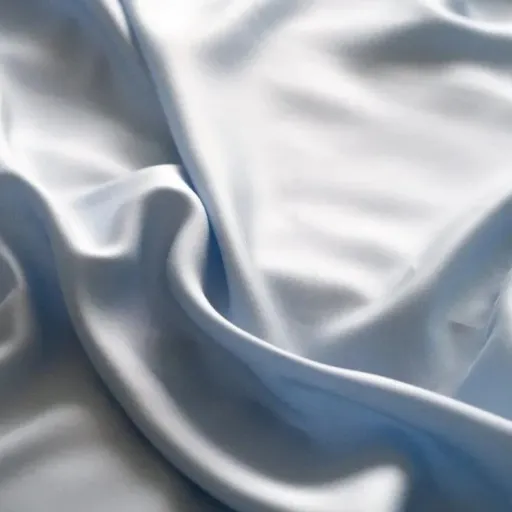
How Viscose is Made
A chemical treatment transforms cellulose, usually from wood pulp, into a multifaceted fiber. First, the cellulose was dissolved in a chemical solution, producing a viscous liquid. This is designed to undergo a lengthy aging process, with treatments, to produce a spinning solution.
Production Steps:
- Pulp Preparation: Wood pulp is chemically treated to extract cellulose
- Chemical Dissolution: Cellulose is dissolved in chemical solution, creating viscous liquid
- Aging Process: Solution undergoes treatments to create a spinning solution
- Wet Spinning: Solution forced through tiny holes into a chemical bath
- Fiber Formation: Instant solidification creates regenerated cellulose fibers
- Finishing: Fibers are washed, bleached, and dried for textile use
In wet spinning, the spinning solution is forced through tiny holes into a chemical bath, which instantly solidifies the fibers of regenerated cellulose. Once the fibers have been formed, they are washed, bleached, and dried to produce mature viscose fiber for use in textile production.
The manufacturing process of viscose is by all means cheap and straightforward. It involves the use of chemicals and quite a lot of pollution. Today, many manufacturers are trying hard to implement eco-sustainable technologies, which would be less harmful along with sparing water use.
Types of Viscose: Conventional vs. Sustainable
⚠️ Conventional Viscose
- Uses toxic chemicals like carbon disulfide
- High water and energy consumption
- Releases harmful emissions and wastewater
- Poses health hazards to workers
- Causes environmental damage
✅ Sustainable Viscose
- Closed-loop chemical recovery and reuse
- Reduced environmental footprint
- Sustainably managed forest sourcing
- Eco-friendly production technologies
- Responsible forestry practices
Conventional viscose refers to an older and rather hazardous production process for viscose fibers. It involves heavy chemical processing and is highly polluting in nature. This process employs toxic chemicals, such as carbon disulfide, and consumes excessive amounts of water and energy. This production process releases pollution in the form of harmful gaseous emissions and wastewater laden with residual chemicals, thereby causing grave environmental damage.
In contrast, sustainable viscose is based on the reduction of the environmental footprint laid down by viscose production. It uses eco-friendly technology; for example, the closed-loop process prevents the chemicals from being discharged into the environment by recovering and reusing them. The sustainable production of viscose also seeks to control the sourcing of its raw materials, ensuring that these are obtained from sustainably managed forests so as to lessen depletion of natural resources and encourage responsible forestry practices.
In choosing sustainable viscose rather than the conventional kind, both manufacturers and consumers can pass on the positive message of an environmentally conscious approach. Although sustainable options may float a bit higher on the price scale or require a bit more of technical know-how, their much-lowered impact on the ecosystem and natural resources may well be a stepping stone on the pathway toward a greener and more conscientious textile industry.
Environmental Considerations in Viscose Making
🌱 Environmental Concerns
- Deforestation: Unsustainable harvesting of wood pulp from forests
- Chemical Pollution: Use of toxic chemicals like carbon disulfide and sulfuric acid
- Water Contamination: Discharge of untreated wastewater affecting aquatic life
- High Resource Use: Excessive water and energy consumption
- Biodiversity Loss: Impact on forest ecosystems and wildlife
Making viscose basically pollutes the environment because of the chemicals used and other necessary resources for manufacture. Traditional viscose-making processes require wood pulp, which most often comes from forests that are not satisfactorily harvested, thereby triggering deforestation and biodiversity loss in a bad way. The technique also uses water and energy in very high proportions, so the overall environmental impact is very big.
Other main concerns arise regarding the highest toxicity and corrosiveness of chemicals used in the making of viscose: carbon disulfide, sodium hydroxide, and sulfuric acid are regarded as the major ones. If not handled properly, these chemicals can be hazardous to workers and the environment itself. Water may be discharged after treatment from the processes, then polluting nearby ecological sinks. This, in turn, affects the water quality and damages aquatic life.
🔄 Sustainable Solutions
- Closed-Loop Systems: Chemical recovery and reuse to minimize waste
- Certified Forests: FSC and PEFC certified sustainable wood sourcing
- Cleaner Technology: Reduced chemical usage and safer alternatives
- Water Treatment: Advanced wastewater treatment to prevent contamination
- Energy Efficiency: Renewable energy sources and reduced consumption
Making a transition toward sustainable production would stand as the solution to curbing this risky situation. Closed loop manufacturing system designs to recover and reuse chemicals with major reductions being achieved. Furthermore, raw materials should be sourced only from certified sustainable forests to reduce deforestation. The above-mentioned practice could therefore account for a green way to do viscose production that will not affect its usefulness in the textile industry in any way.
Applications of Viscose Fabric
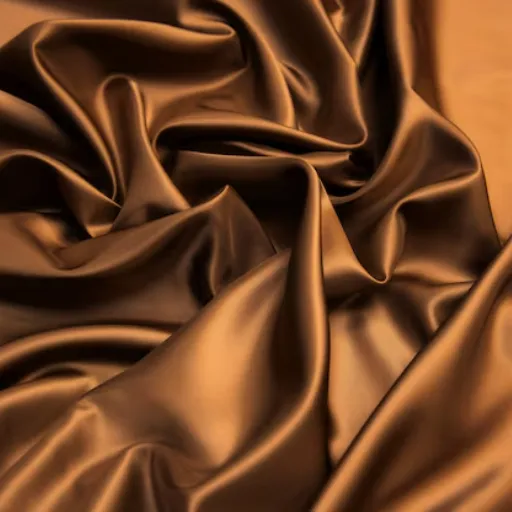
Uses of Viscose Fabric in the Textile Industry
The wide scope of application of viscose renders it a considerable force in the textile fields, pertaining to availability and excellent inherent properties. Its softness and airiness make viscose a very good candidate for common apparel-a category with dresses, shirts, and blouses. More so, it also offers the price advantage of providing that soft feel and weighty drape that is sometimes not so easily obtainable when purchasing expensive textile fabrics such as silk.
👗 Fashion Apparel
Dresses, shirts, blouses, linings
🏠 Home Textiles
Curtains, bedding, upholstery
🎨 Design Elements
Decorative fabrics, artistic textiles
🧵 Blends
Mixed with cotton, wool, and polyester
On another note, it is also used in household fabrics. Curtains, upholstery, and bed linens are apt examples that would require the use of viscose because of its sheen and functional ability to impart a refined uplift. Conducive to adaptability, designers do not hesitate to combine viscose with other materials to increase the homes’ association in terms of durability and looks.
Specially appreciated in the manufacturing of patterned clothes and textile products for its color retention, viscose fabric forms an excellent dye profile that resists fading and thus retains its appearance over time, besides being a greener option if produced sustainably. Given the wide variety of uses, it remains one of the textile industry’s common materials.
Viscose in Fashion: Advantages and Disadvantages
✅ Fashion Advantages
- Silk-like luxury: Premium feel at an affordable price
- Breathability: Comfort in warm weather conditions
- Excellent drape: Perfect for flowing, elegant designs
- Color vibrancy: Accepts dyes beautifully for rich colors
- Versatile styling: Suitable for various garment types
⚠️ Fashion Disadvantages
- Low durability: Weakens when wet, prone to damage
- Care requirements: Gentle handling is needed during washing
- Wrinkle tendency: Requires frequent ironing
- Shrinkage risk: May shrink with improper care
- Environmental impact: Concerns with conventional production
The viscose fabric has several advantages that make it a fashion choice. One of these benefits is its soft, silky feel, reminiscent of natural silk but at a heavily lowered price. Viscose is also very breathable and hence comfortable in warm weather. of Viscose also offers a fantastic drape. This makes it perfect for dresses, blouses, and any other garment requiring a more fluid look. Besides, it accepts dyes very well, thereby giving the designer a range of varied possibilities for vivid colors.
On the downside, various drawbacks hamper viscose’s use. Low durability is one of its significant handicaps, especially in a damp environment. The fabric tends to become weaker when it comes into contact with water, shortening its life and making it susceptible to shrinkage or stretching. Moreover, the manufacture of viscose has been subjected to harsh criticisms and questioning from environmentalists because, unless it is done in a well-sustainable way, it involves the use of chemicals detrimental to ecosystems. Another instance is that, being less resistant to wrinkles, viscose can make ironing a bit more tedious.
In contrast, the more attractive properties of viscose are comfort, low price, and collective aesthetic application. However, the issues of durability and environmental concern do cast a shadow over it. Hence, consumers may select eco-friendly viscose in order to reduce the environmental impact, whereas designers may use it sparingly and only where its unique properties offer the most benefit.
Viscose Home Textile and Upholstery Market
Viscose attracts ever more attention in the home textile and upholstery fields, regarded for its versatility and elegant sheen. This fiber is usually found being used in the production of curtains, cushions, and upholstery fabrics, all requiring very soft finishes with an affluent and somewhat even aristocratic one. Since the material can shear looks and feel away from silk and still be way cheaper, it has gained immense popularity among interior designers seeking comfort and glamour.
🏠 Home Textile Applications
| Curtains & Drapes | Elegant drape, luxurious appearance |
| Cushions & Pillows | Soft texture, decorative appeal |
| Upholstery | Affordable luxury, smooth finish |
| Bedding | Breathable, comfortable for sleep |
The downside to the use of viscose in this altogether is that the material is fairly fragile, especially when subjected to regular wear or heavy use. Its moisture absorption makes it vulnerable to staining and damage from spills. Sunlight can degrade the fibers gradually, shortening the lifespan of viscose home products, and therefore becoming a big no-no for the upholstery of a high-use area or outdoor furniture.
These inconveniences have led many consumers and manufacturers to note the increases in strength and resilience occurring when viscose is blended with materials that are more durable, such as polyester or cotton. Moreover, avoiding the environmentally compromising properties of regular viscose by going green would allow one to relish its look still. Viscose allows this one with which to adorn any fine home with graces and comfort, given intelligent use, without compromising function or sustainability.
Biodegradability and Sustainability of Viscose
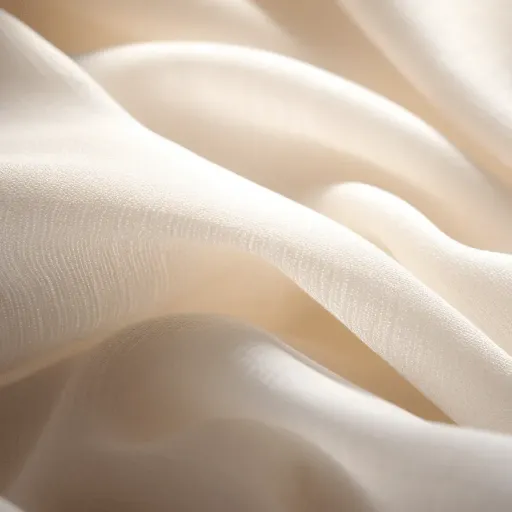
Is Viscose Biodegradable?
🌱 Biodegradability Facts
Yes, viscose is biodegradable! Being made from natural cellulose (wood pulp), viscose decomposes into its natural components under suitable conditions. This offers significant environmental advantages over synthetic fibers like polyester or nylon that can persist in the environment for hundreds of years.
Well indeed! Viscose being made of natural materials, arly wood pulp, is biodegradable by nature. The viscose fiber decomposes into its natural components under suitable conditions when disposed of in the soil, thus offering less environmental concern as compared to synthetic fibers like polyester or nylon.
The biodegradability of viscose depends on how the fabric is treated and chemically treated during production. The base material is natural while some processes are heavy on chemicals, thus leaving residues that might be of concern to the environment. If disposed of appropriately, however, such as being composted under suitable conditions, viscose can be broken down properly.
However, despite the fact that it is biodegradable, there are still some issues regarding the sustainability of the production of viscose. Harvesting wood pulp may induce deforestation if it is not done responsibly, and the chemical processes involved may harm the ecosystems unless appropriate safeguards are in place. Hence, it is advisable to choose viscose about its sustainable and ethical production, which helps balance the associated issues and, from another perspective, benefits from its biodegradable nature.
Sustainable Practices in Viscose Production
🌍 Key Sustainable Practices
- Responsible Raw Material Sourcing:
- FSC (Forest Stewardship Council) certified wood
- PEFC (Program for the Endorsement of Forest Certification) standards
- Sustainable forest management practices
- Chemical Process Improvements:
- Closed-loop systems for chemical recovery
- Reduction of harmful chemical usage
- Safer alternative chemicals
- Resource Efficiency:
- Renewable energy sources
- Water conservation and treatment
- Energy-efficient production methods
Sustainable viscose production starts at the level of raw materials, which must be sourced with care. Wood pulp from certified sustainable forests should be used, in order to hold back deforestation and adverse environmental impacts. Certifications like FSC (Forest Stewardship Council) or PEFC (Program for the Endorsement of Forest Certification) certify that the wood utilized to make viscose has been cut in strict adherence to environmental and ethical standards.
Another big factor in sustainable production is reducing the use of harmful chemicals. Traditionally, the process to make viscose involves some harmful chemicals like carbon disulfide and sulfuric acid, which contaminate water bodies and kill ecosystems. Sustainable processes hence, are inclined toward a closed-loop system, wherein chemical substances are carbonized from contamination of the environment and substances are recycled to enhance environmental safety.
Energy and water efficiency are also key considerations in the sustainable production of viscose. The producers of eco-friendly viscose will often consider factors such as energy generation from renewable sources and wastewater treatment methods to prevent waste of resources. This keeps the overall carbon footprint low and greatly decreases adverse effects on adjacent communities and ecosystems, fostering long-term environmental health and sustainability.
Future of Viscose Fiber in Sustainable Fashion
Viscose fiber is increasingly positioned as the material in the move toward sustainable fashion. Its biodegradable nature and potential for being less harmful to the environment, when responsibly sourced and produced, might have made this textile a worthy choice for an eco-friendly textile. Viscose has the potential to lessen the environmental impact of the fashion industry, touching on matters such as waste and pollution, by using renewable wood pulp and applying cleaner processes.
🔮 Future Innovations
- Advanced Closed-Loop Technologies: Complete chemical recovery and recycling
- Alternative Raw Materials: Agricultural waste, recycled textiles
- Biotechnology Integration: Enzyme-based processing methods
- Supply Chain Transparency: Blockchain tracking and certification
- Circular Economy Models: Textile-to-textile recycling systems
For this to happen, newer production technologies need to be developed. The innovations are aimed at closed-loop processes, which recycle chemicals and water, minimizing toxic emissions so that production of the viscose is environmentally acceptable. Furthermore, relevant must be the certification of source forests, certified under FSC (Forest Stewardship Council), among others, so that deforestation or destruction of biodiversity does not take place. These steps help the fiber embrace sustainability without neglecting quality and price.
Transparent and committed practices throughout the supply chain will drive the adoption of viscose in sustainable fashion. Regulatory standards need to be upheld; hence, all stakeholders, including manufacturers, brands, and consumers, must collaborate for a speedier adoption. Therefore, by witnessing rapid growth in eco-technologies and ethically sourced fashion, the industry will enable a strong revival of viscose in a sustainable and environmentally conscious way.
Frequently Asked Questions (FAQ)
Q: What are the key viscose fiber properties?
A: Properties of viscose fibers are softness on the skin, somewhat more than being a general-purpose fiber, and breathability. The nature of viscose fiber makes it an attractive alternative to silk in the fashion industry. Further, viscose is biodegradable and some of its properties are favorable for wear in all sorts of climates, including very hot summer days.
Q: How is viscose fabric made?
A: Viscose fabric is manufactured through a cellulose regeneration process. Raw materials, normally wood pulp, are dissolved in the chemical solution, with cellulose xanthate being a frequently used chemical. A viscous solution is produced from which long fibers can be extruded and spun into viscose rayon, a type of semi-synthetic fabric.
Q: Is viscose a synthetic or natural fabric?
A: Viscose is generally classified as semi-synthetic because it is produced from natural cellulose by heavy chemical processing. Though formed from natural sources, the method of making viscose fiber imparts peculiar properties that distinguish it from those of a natural fiber such as cotton or silk.
Q: What are the end uses of viscose garments?
A: Depending on the end uses of the viscose textiles, the products may have couture-style garments that include dresses, blouses, and linings for a few. Viscose, while supple against the skin, has good breathability and is preferred for summer clothing. It is also used in blends with other fibers to enhance the overall properties of the fabric.
Q: What makes viscose a popular fabric in the fashion industry?
A: In this industry, the main reason for viscose being preferred is its luxurious feel and drape along with appearance resembling silk. It acts as an affordable artificial substitute for silk. Plus, this fabric can be used in the manufacture of a variety of clothing styles and designs that demand a certain amount of drape.
Q: Can viscose be used as a substitute for silk?
A: The answer is yes; viscose is frequently chosen over silk as the nearest alternative because of its textural similarity and lustrous appearance. The drape and softness of viscose-given fabric is brilliant in itself to let it be compared with silk, though doing so liberates expenses; hence, for fashion designers wanting cheap elegance, viscose proves handy.
Q: How does viscose compare to other materials?
A: When compared to other materials, viscose has a unique combination of properties. Instead of only natural like cotton, viscose feels silkier and more luxurious. Its biodegradable nature further distances it from many synthetic fibers, in support of making eco-friendly fashion choices.
Q: What is the history of viscose?
A: The history of viscose dates back to the late 19th century, when it was first developed as a method for making a silk-like fabric from wood pulp. Being an inexpensive alternative to silk, Rayon, from inception, became an important fabric for large working masses. There have been technical developments in production procedures that will improve its fiber properties which enhance the standing of viscose in the textile industry.
References
-
What is Viscose Fabric: Properties, How it’s Made and Where – Sewport – A detailed guide on viscose fabric properties, including moisture-wicking, heat retention, and stretchability.
-
Viscose Fabric Guide: Types, Properties, Application – Tissura – Insights into the advantages and disadvantages of viscose, such as its softness, durability, and tendency to crease.
-
7 Things You Need to Know About Viscose Fibers – ISPO – Highlights viscose’s high absorbency, capable of absorbing up to 400% of its weight in moisture.
-
What Is Viscose: Understanding Your Fabrics – Contrado – Discusses viscose’s versatility, breathability, excellent color retention, and draping qualities.
-
Characteristics of Viscose – James Dunlop Textiles – Explores the natural beauty, versatility, and scientific advancements of viscose as the first regenerated fiber.








